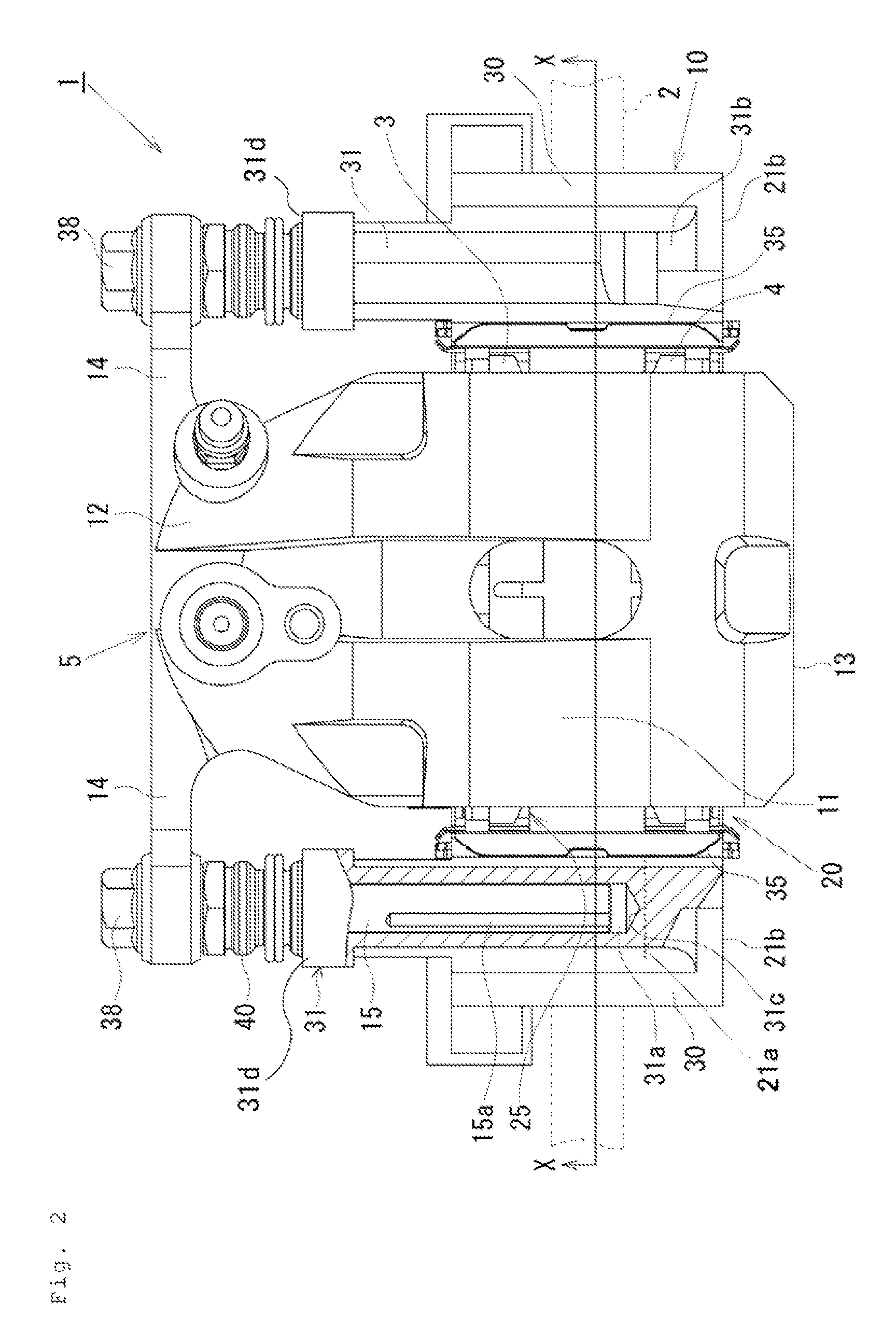Disk brake
a technology of disc brakes and calipers, which is applied in the direction of fluid actuated brakes, braking systems, transportation and packaging, etc., can solve the problems of high possibility of occurrence of brake judder phenomenon, pin insertion holes of pins of respective arm portions that interfere with the inner wall surfaces of sliding pins, etc., and achieve the effect of ensuring the sliding ability of the caliper
- Summary
- Abstract
- Description
- Claims
- Application Information
AI Technical Summary
Benefits of technology
Problems solved by technology
Method used
Image
Examples
first embodiment
[0015]Hereinafter, a first embodiment will be described with reference to FIGS. 1 to 5. In the following description, the term “outer side” will be used to refer to a wheel side as viewed at a disk rotor 2 (the right side in FIG. 2), and the term “inner side” will be used to refer to a central side as viewed at the disk rotor 2 in a lateral direction of a vehicle, which is an opposite side from the wheel (the left side in FIG. 2). Further, the term “disk axial direction” will be used to refer to an axial direction of a rotational axis of the disk rotor 2. The term “disk radial direction” will be used to refer to a radial direction of the disk rotor 2. The term “disk rotational direction” will be used to refer to a rotational direction of the disk rotor 2.
[0016]As illustrated in FIGS. 1 to 4, a disk brake 1 according to the first embodiment includes a pair of frictional pads, i.e., an inner-side frictional pad 3 and an outer-side frictional pad 4 disposed at opposite sides of the dis...
second embodiment
[0047]In the disk brake the caliper 105 includes the bottomed cylindrical cylinder portion 12 and the driving unit 51, 52, 53. The cylinder portion reciprocally movably contains the piston configured to press the frictional pads 3 and 4, and further contains the piston thrust mechanism configured to mechanically thrust the piston. The driving unit 51, 52, 53 is fixed to the bottom side of the cylinder portion 12 so as to provide a thrust force to the piston thrust mechanism. The driving unit 51, 52, 53 is disposed so as to extend from the center of the cylinder portion along the disk rotational direction. When the caliper 105 provided with this driving unit 51, 52, 53 is attached to the mount member 10, even through the center of gravity of the caliper 105 is positioned at the bottom side of the cylinder portion 12 due to the driving unit 51, 52, 53, it is possible to ensure the slidability of the caliper 105.
[0048]In the disk brake according to the second embodiment, the pin inser...
PUM
 Login to View More
Login to View More Abstract
Description
Claims
Application Information
 Login to View More
Login to View More - R&D
- Intellectual Property
- Life Sciences
- Materials
- Tech Scout
- Unparalleled Data Quality
- Higher Quality Content
- 60% Fewer Hallucinations
Browse by: Latest US Patents, China's latest patents, Technical Efficacy Thesaurus, Application Domain, Technology Topic, Popular Technical Reports.
© 2025 PatSnap. All rights reserved.Legal|Privacy policy|Modern Slavery Act Transparency Statement|Sitemap|About US| Contact US: help@patsnap.com



